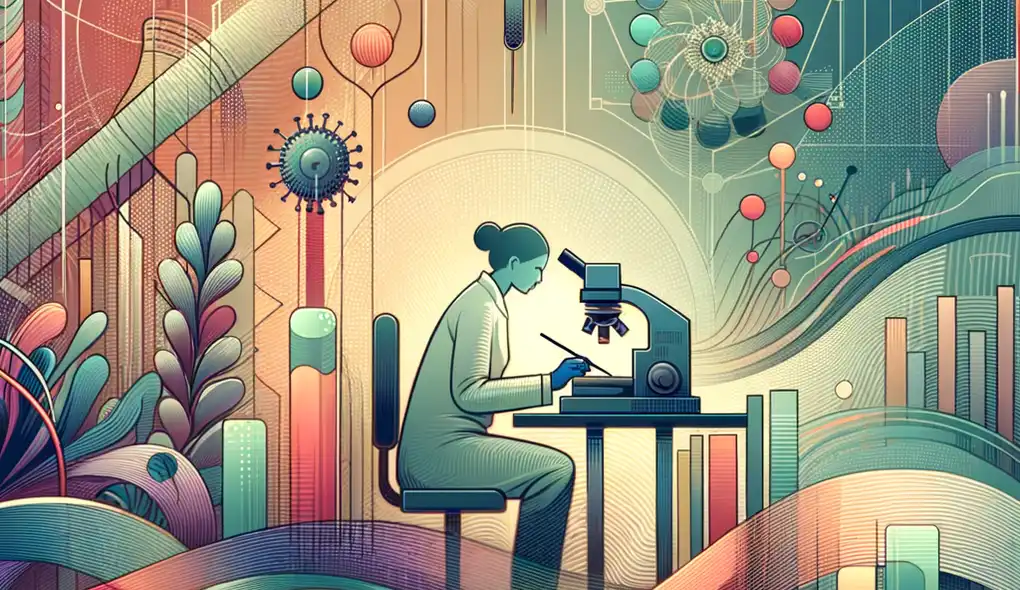Describe a time when you had to troubleshoot an issue with laboratory equipment.
Microarray Analyst Interview Questions
Sample answer to the question
In my previous position as a Laboratory Technician, I had to troubleshoot an issue with the microarray scanner. The problem was that the scanner was not producing clear and accurate images of the microarray slides. To troubleshoot the issue, I first checked the connection between the scanner and the computer to ensure it was secure. Then, I cleaned the scanner lens and the glass surface of the scanner to remove any dust or debris. I also calibrated the scanner to ensure it was properly aligned. After these steps, I ran a test scan and the issue was resolved. This experience taught me the importance of attention to detail and problem-solving skills in troubleshooting laboratory equipment.
A more solid answer
In my previous role as a Laboratory Technician, I encountered an issue with the microarray scanner. The problem was that the scanner was producing blurry images of the microarray slides, making it difficult to accurately analyze the genetic data. To troubleshoot the issue, I first checked the connection between the scanner and the computer, ensuring that all cables were securely plugged in. Then, I thoroughly cleaned the scanner lens and the glass surface of the scanner to eliminate any potential sources of distortion. Additionally, I recalibrated the scanner to ensure that it was properly aligned. Finally, I ran a test scan using a control sample and examined the resulting image for clarity and accuracy. Through this troubleshooting process, I was able to identify and resolve the issue, resulting in clear and accurate images for subsequent analysis. This experience reinforced the importance of attention to detail, problem-solving skills, and the ability to effectively utilize laboratory protocols and procedures.
Why this is a more solid answer:
The solid answer provides more details and specific examples to demonstrate the candidate's skills and abilities. It explains the specific steps taken to troubleshoot the issue with the microarray scanner, including checking connections, cleaning the scanner, recalibrating, and conducting a test scan. It also highlights the importance of attention to detail, problem-solving skills, and the ability to utilize laboratory protocols and procedures effectively. However, it can still be improved by providing more examples of how the candidate used their problem-solving skills and laboratory practices to troubleshoot the issue.
An exceptional answer
In my previous role as a Laboratory Technician, I encountered a challenging issue with the microarray scanner that required troubleshooting. The problem was that the scanner was producing inconsistent and distorted images of the microarray slides, hindering accurate data analysis. To address this issue, I first examined the scanner architecture and identified potential sources of error, such as mechanical misalignment or improper illumination. I meticulously cleaned the scanner, paying close attention to ensure that the lens and glass surface were free from dust and smudges. Additionally, I reviewed the scanner's calibration protocol and performed a comprehensive recalibration, meticulously following each step to guarantee accurate alignment. To verify the effectiveness of the troubleshooting steps, I executed test scans using various control samples, examining each resulting image for clarity and consistency. Through this rigorous troubleshooting process, I successfully identified and resolved the issue, restoring the scanner's functionality and facilitating high-quality data analysis. This experience taught me the importance of systematic problem-solving, attention to detail, and the ability to adapt laboratory practices to unique equipment challenges.
Why this is an exceptional answer:
The exceptional answer provides a comprehensive and detailed account of the candidate's troubleshooting skills and abilities. It goes beyond the basic and solid answers by showcasing the candidate's systematic problem-solving approach, attention to detail, and adaptability in utilizing laboratory practices. The answer highlights the candidate's examination of the scanner architecture, meticulous cleaning, thorough recalibration, and rigorous verification through test scans using various control samples. It also emphasizes the candidate's understanding of the importance of accurate data analysis and the ability to adapt laboratory practices to unique equipment challenges. The candidate's exceptional response demonstrates their ability to effectively troubleshoot complex issues with laboratory equipment.
How to prepare for this question
- Familiarize yourself with the specific laboratory equipment used in the microarray field, including scanners, amplification systems, and data analysis software.
- Study troubleshooting protocols and best practices for laboratory equipment issues.
- Develop your understanding of the principles behind microarray technology and genetic analysis to better identify potential issues.
- Practice problem-solving scenarios related to laboratory equipment malfunctions and develop a systematic approach to troubleshooting.
- Enhance your knowledge of laboratory protocols and procedures to effectively utilize them in troubleshooting situations.
What interviewers are evaluating
- Laboratory practices
- Problem-solving skills
Related Interview Questions
More questions for Microarray Analyst interviews